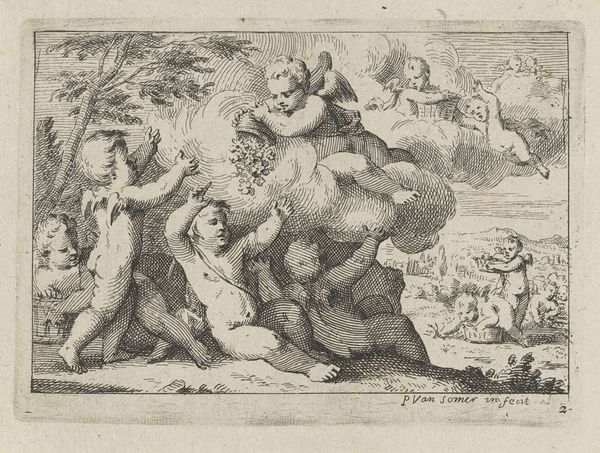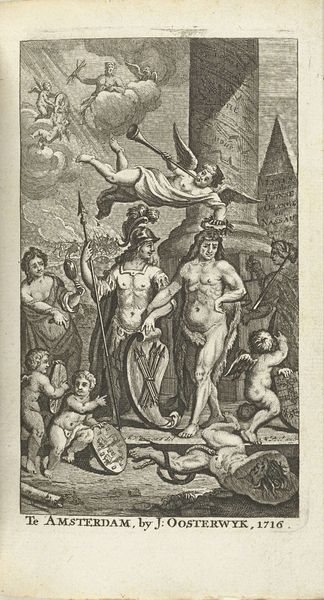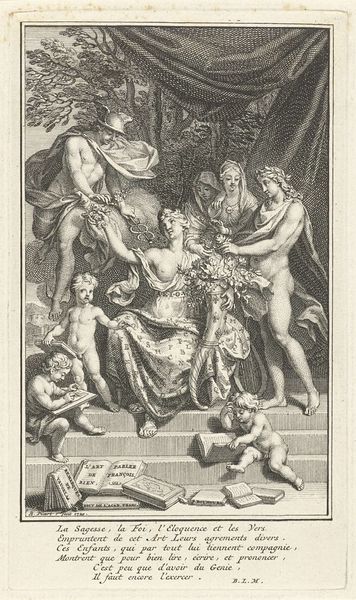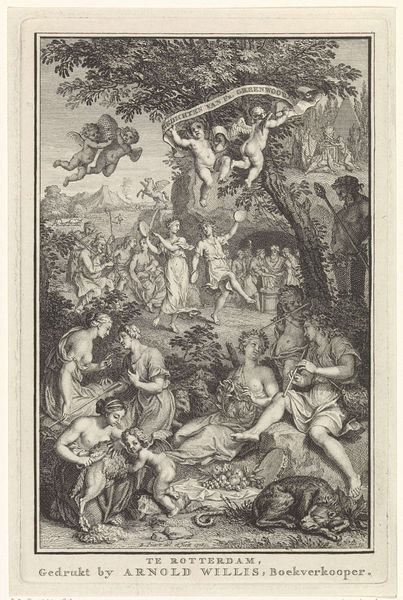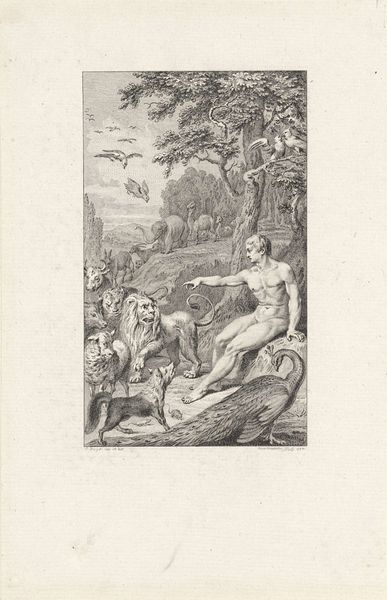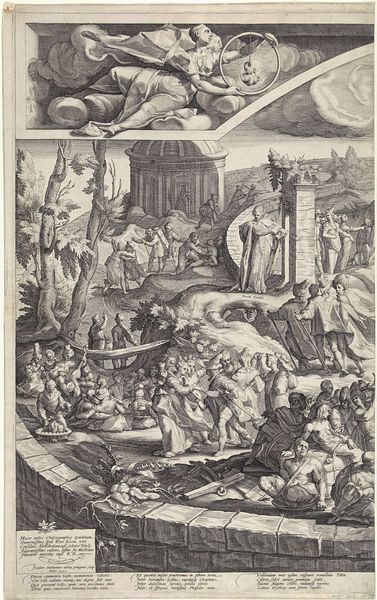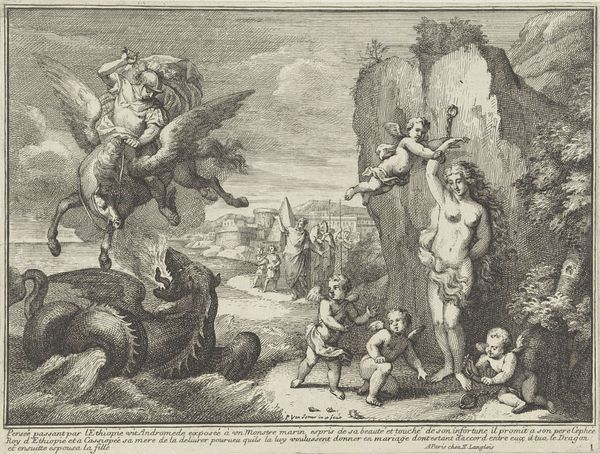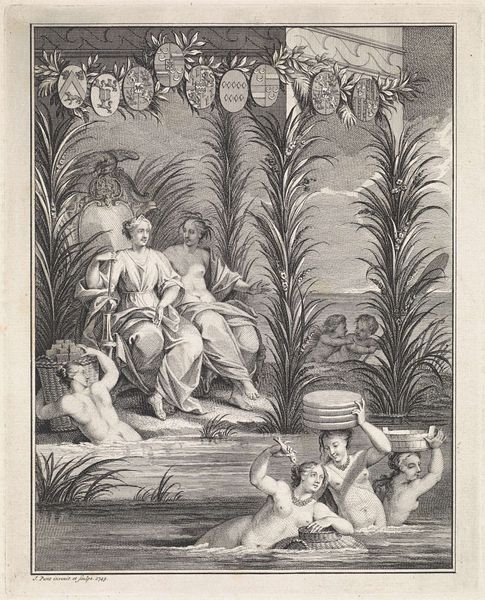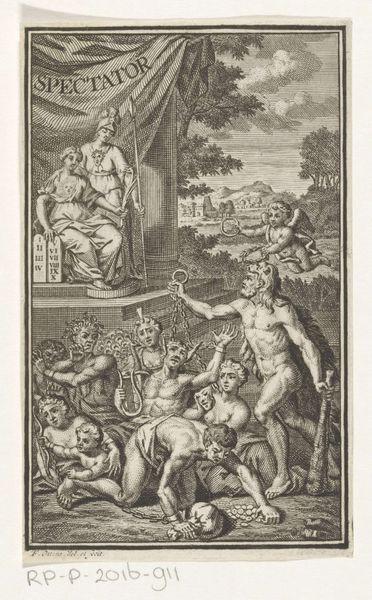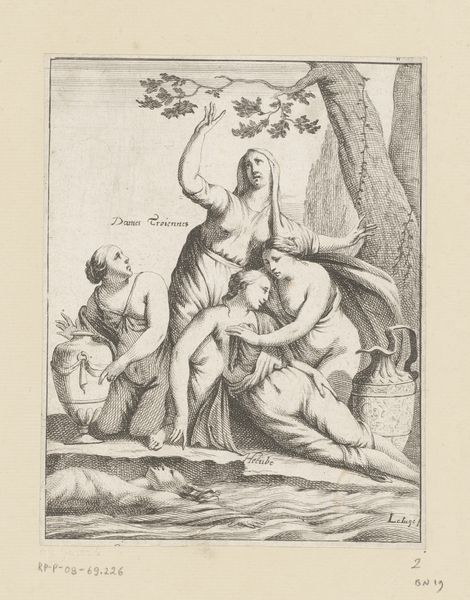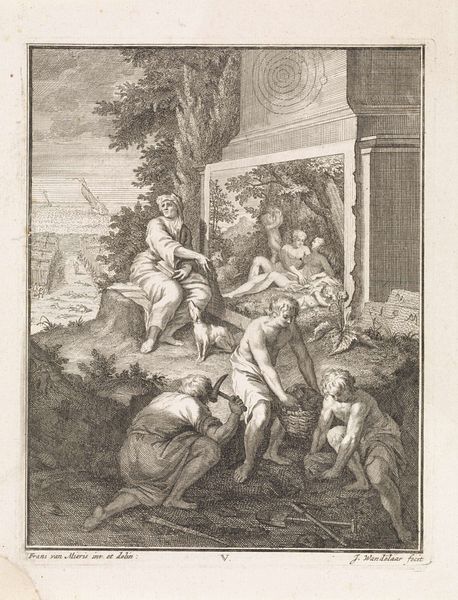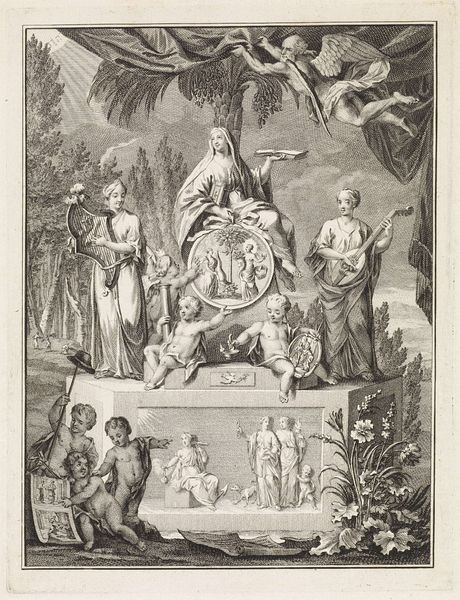
Dimensions: height 158 mm, width 99 mm
Copyright: Rijks Museum: Open Domain
Editor: Here we have "Venus and her Entourage," an engraving from 1786 by Emmanuel Jean de Ghendt, currently housed in the Rijksmuseum. The figures are all so intertwined. I'm curious how to interpret this kind of idyllic, almost crowded scene. What strikes you about this engraving? Curator: What grabs me is the labour involved. Consider the engraver’s meticulous hand, cutting lines into the metal plate to reproduce this scene. The commercial nature of engravings meant multiples were printed, circulating ideas and images of beauty to a broader audience. Look at the inscription, ‘O mon fils, mon cher fils.’ Editor: So, it's about production, not just the visual spectacle? Curator: Exactly. The artist mediates a scene of supposed natural beauty – Venus surrounded by cherubs, evoking themes of motherhood and love. But think about who had access to these images. Who could afford them? Who was supposed to emulate the scene depicted? Consider also the material context - the availability of paper, the price of engravings, all of these affected who would consume it and how. It's not just an idealized representation, but a carefully crafted commodity. The making and consuming are deeply connected to the social world. Editor: That's fascinating! So, viewing it through a materialist lens encourages us to ask not just *what* it depicts, but *how* it was made and *for whom*. Curator: Precisely. We often prioritize the artist's intentions or the beauty on display, forgetting the complex economic and social network enabling its production and consumption. What do you take away from that? Editor: I now understand how something seemingly focused on beauty and mythology is heavily shaped by economic forces. Thank you for clarifying this approach.
Comments
No comments
Be the first to comment and join the conversation on the ultimate creative platform.
